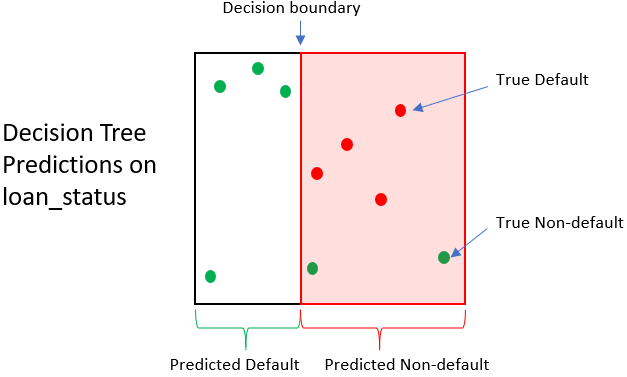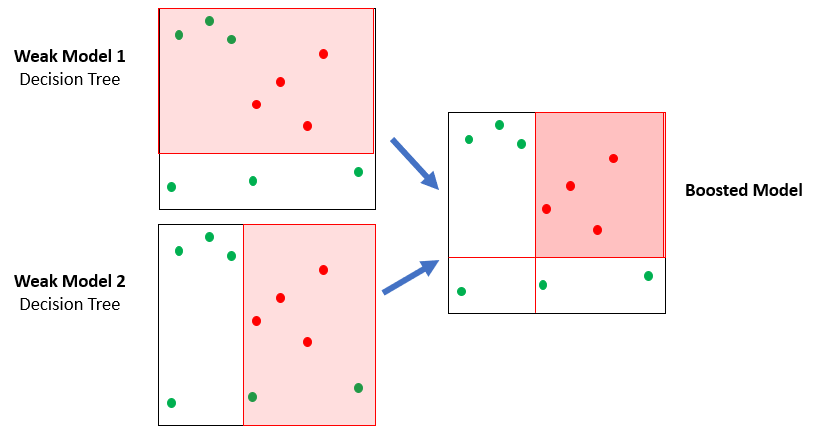Gradient boosted trees with XGBoost
Credit Risk Modeling in Python

Michael Crabtree
Data Scientist, Ford Motor Company
Decision trees
- Creates predictions similar to logistic regression
- Not structured like a regression
Decision trees for loan status
- Simple decision tree for predicting
loan_statusprobability of default
Decision tree impact
| Loan | True loan status | Pred. Loan Status | Loan payoff value | Selling Value | Gain/Loss |
|---|---|---|---|---|---|
| 1 | 0 | 1 | $1,500 | $250 | -$1,250 |
| 2 | 0 | 1 | $1,200 | $250 | -$950 |
A forest of trees
- XGBoost uses many simplistic trees (ensemble)
- Each tree will be slightly better than a coin toss
Creating and training trees
- Part of the
xgboostPython package, calledxgbhere - Trains with
.fit()just like the logistic regression model
# Create a logistic regression model
clf_logistic = LogisticRegression()
# Train the logistic regression
clf_logistic.fit(X_train, np.ravel(y_train))
# Create a gradient boosted tree model
clf_gbt = xgb.XGBClassifier()
# Train the gradient boosted tree
clf_gbt.fit(X_train,np.ravel(y_train))
Default predictions with XGBoost
- Predicts with both
.predict()and.predict_proba().predict_proba()produces a value between0and1.predict()produces a1or0forloan_status
# Predict probabilities of default
gbt_preds_prob = clf_gbt.predict_proba(X_test)
# Predict loan_status as a 1 or 0
gbt_preds = clf_gbt.predict(X_test)
# gbt_preds_prob
array([[0.059, 0.940], [0.121, 0.989]])
# gbt_preds
array([1, 1, 0...])
Hyperparameters of gradient boosted trees
- Hyperparameters: model parameters (settings) that cannot be learned from data
- Some common hyperparameters for gradient boosted trees
learning_rate: smaller values make each step more conservativemax_depth: sets how deep each tree can go, larger means more complex
xgb.XGBClassifier(learning_rate = 0.2,
max_depth = 4)
Let's practice!
Credit Risk Modeling in Python




